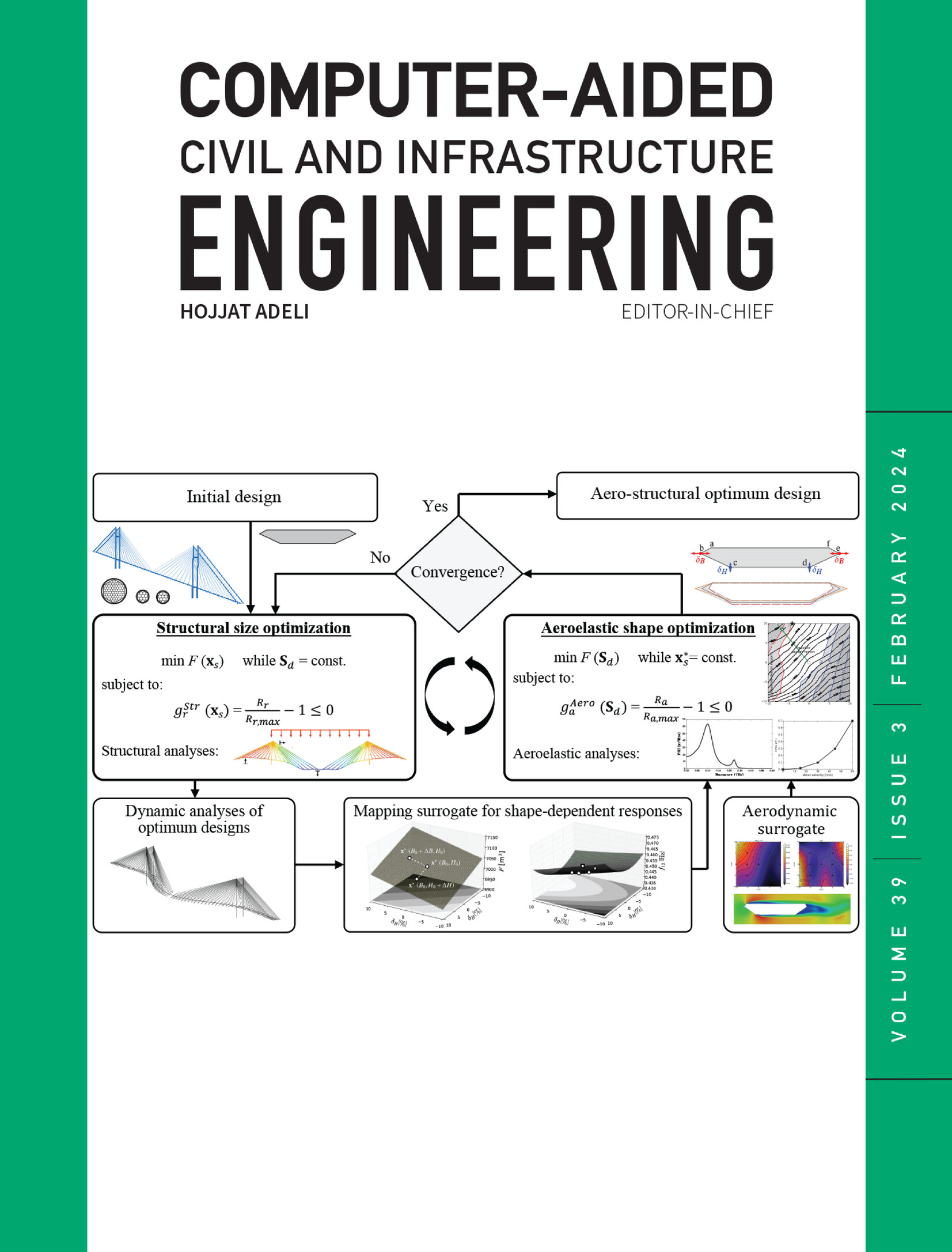Signal noise estimation and removal of sub‐mm 3D pavement texture data using 1D residual denoising network
IF 8.5
1区 工程技术
Q1 COMPUTER SCIENCE, INTERDISCIPLINARY APPLICATIONS
引用次数: 0
Abstract
Signal noise removal is an indispensable and critical procedure in obtaining clean pavement texture data for reliable pavement evaluation and management. Nevertheless, the presently established denoising approaches to pavement texture data still rely on traditional techniques that have long struggled with removing noise accurately and consistently. This paper innovatively initiates a one‐dimensional (1D) residual denoising network (R1DNet) to achieve the noise removal of 3D pavement texture data. R1DNet is proposed as a 1D architectural encoder–decoder that considers the unique characteristics of 3D texture data from 3D laser imaging technology. The encoder extracts diverse profile features of input noisy texture data through two favorably developed 1D modular structures: a cascade deep convolutional module and a parallel multi‐scale attention module. The decoder gradually parses the extracted profile features and estimates noise, with which the clean texture data are obtained based on a simple subtraction operation. The architecture of R1DNet is determined to be optimal in both accuracy and efficiency, using a customized performance‐balancing evaluation function. For model development in a supervised manner, a systematic labeling method is specifically developed, which can build the baseline clean texture data from real 0.1 mm noisy 3D texture data. The experimental results show that the proposed R1DNet can effectively eliminate noise and produce clean texture data closely matching the baseline, presenting significant improvements in accuracy and consistency, compared to the traditional denoising methods.基于一维残差去噪网络的亚毫米级三维路面纹理数据信号噪声估计与去除
为了获得干净的路面纹理数据,实现可靠的路面评价和管理,信号噪声去除是必不可少的关键步骤。然而,目前建立的路面纹理数据去噪方法仍然依赖于传统技术,这些技术长期以来一直在努力准确和一致地去除噪声。本文创新性地提出了一种一维残差去噪网络(R1DNet)来实现三维路面纹理数据的去噪。R1DNet是一种考虑三维激光成像技术中三维纹理数据独特特性的一维结构编解码器。编码器通过两种先进的一维模块结构:级联深度卷积模块和并行多尺度注意力模块,提取输入噪声纹理数据的多种轮廓特征。解码器对提取的轮廓特征进行逐级解析并估计噪声,通过简单的减法运算得到干净的纹理数据。R1DNet的架构被确定为在准确性和效率方面都是最佳的,使用定制的性能平衡评估功能。针对有监督的模型开发,专门开发了一种系统的标注方法,该方法可以从真实的0.1 mm噪声三维纹理数据中构建基线清洁纹理数据。实验结果表明,与传统去噪方法相比,所提出的R1DNet方法能够有效地去噪,生成与基线非常匹配的干净纹理数据,在准确性和一致性方面有显著提高。
本文章由计算机程序翻译,如有差异,请以英文原文为准。
求助全文
约1分钟内获得全文
求助全文
来源期刊
CiteScore
17.60
自引率
19.80%
发文量
146
审稿时长
1 months
期刊介绍:
Computer-Aided Civil and Infrastructure Engineering stands as a scholarly, peer-reviewed archival journal, serving as a vital link between advancements in computer technology and civil and infrastructure engineering. The journal serves as a distinctive platform for the publication of original articles, spotlighting novel computational techniques and inventive applications of computers. Specifically, it concentrates on recent progress in computer and information technologies, fostering the development and application of emerging computing paradigms.
Encompassing a broad scope, the journal addresses bridge, construction, environmental, highway, geotechnical, structural, transportation, and water resources engineering. It extends its reach to the management of infrastructure systems, covering domains such as highways, bridges, pavements, airports, and utilities. The journal delves into areas like artificial intelligence, cognitive modeling, concurrent engineering, database management, distributed computing, evolutionary computing, fuzzy logic, genetic algorithms, geometric modeling, internet-based technologies, knowledge discovery and engineering, machine learning, mobile computing, multimedia technologies, networking, neural network computing, optimization and search, parallel processing, robotics, smart structures, software engineering, virtual reality, and visualization techniques.

 求助内容:
求助内容: 应助结果提醒方式:
应助结果提醒方式:


